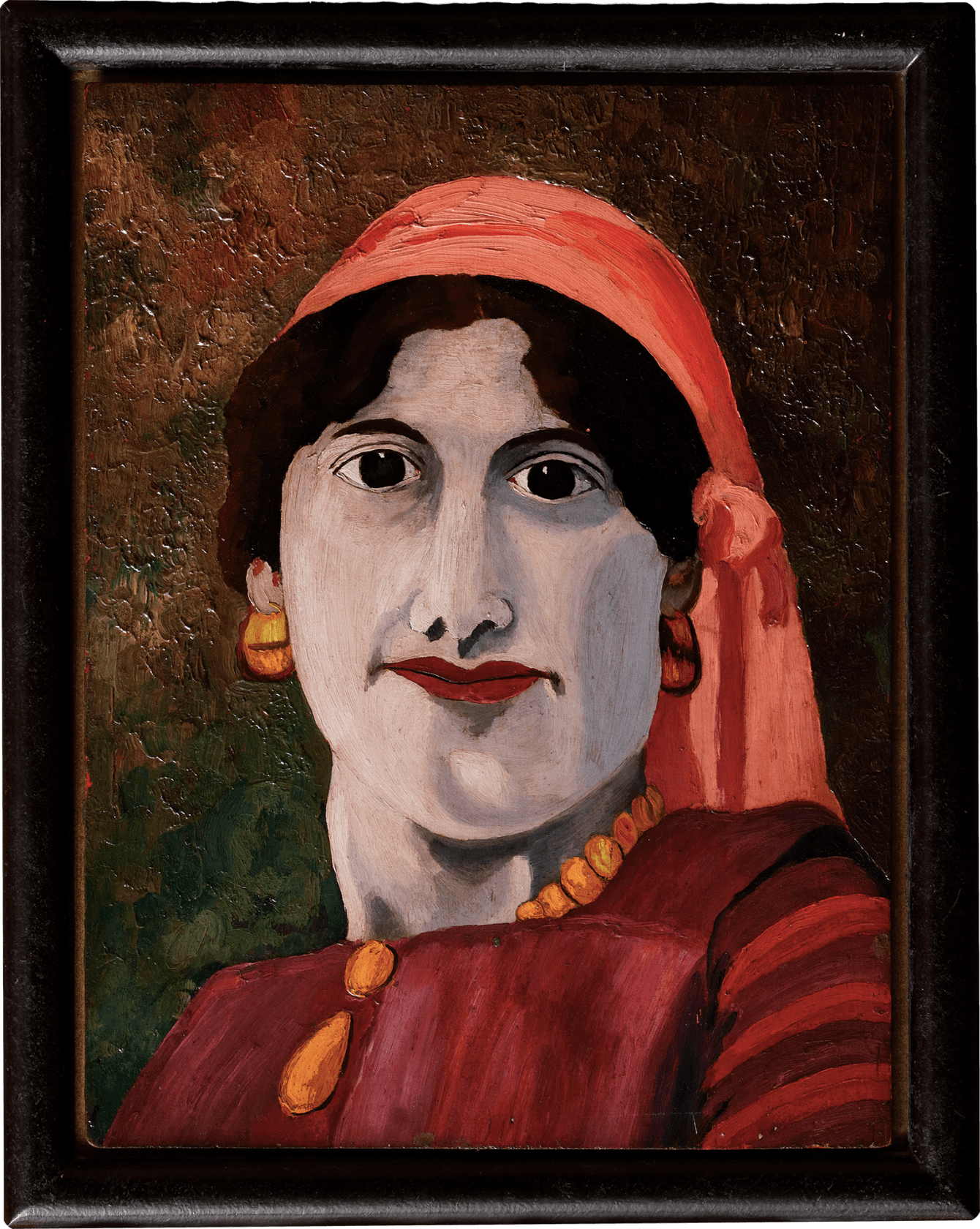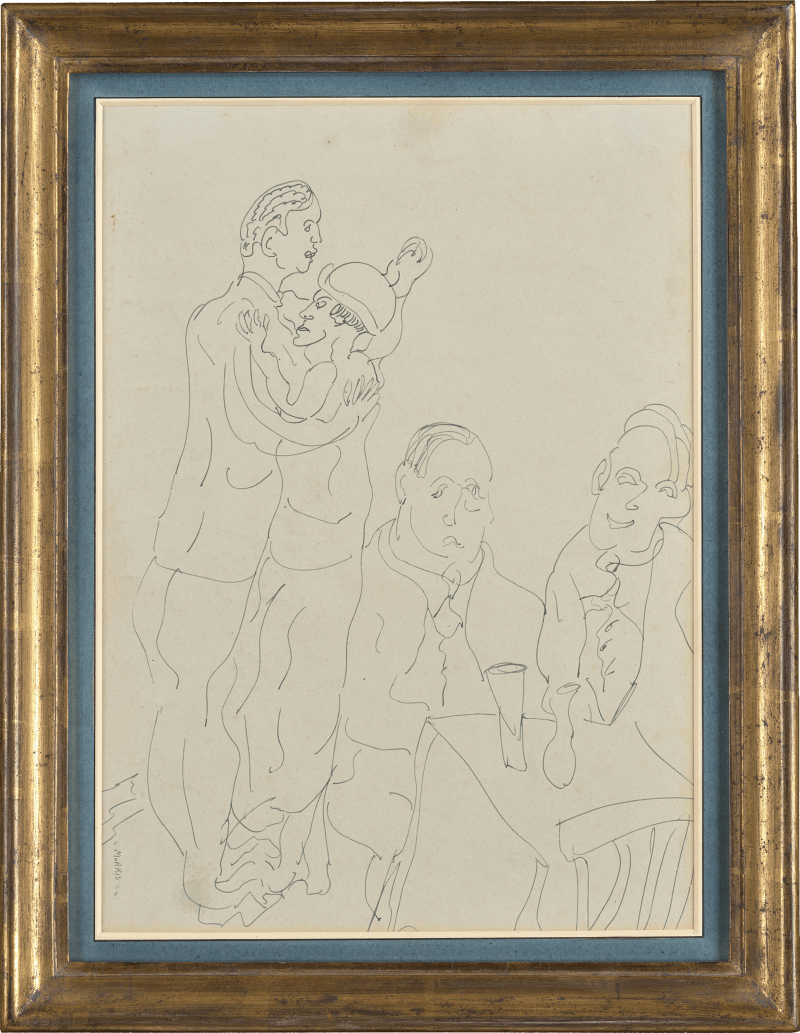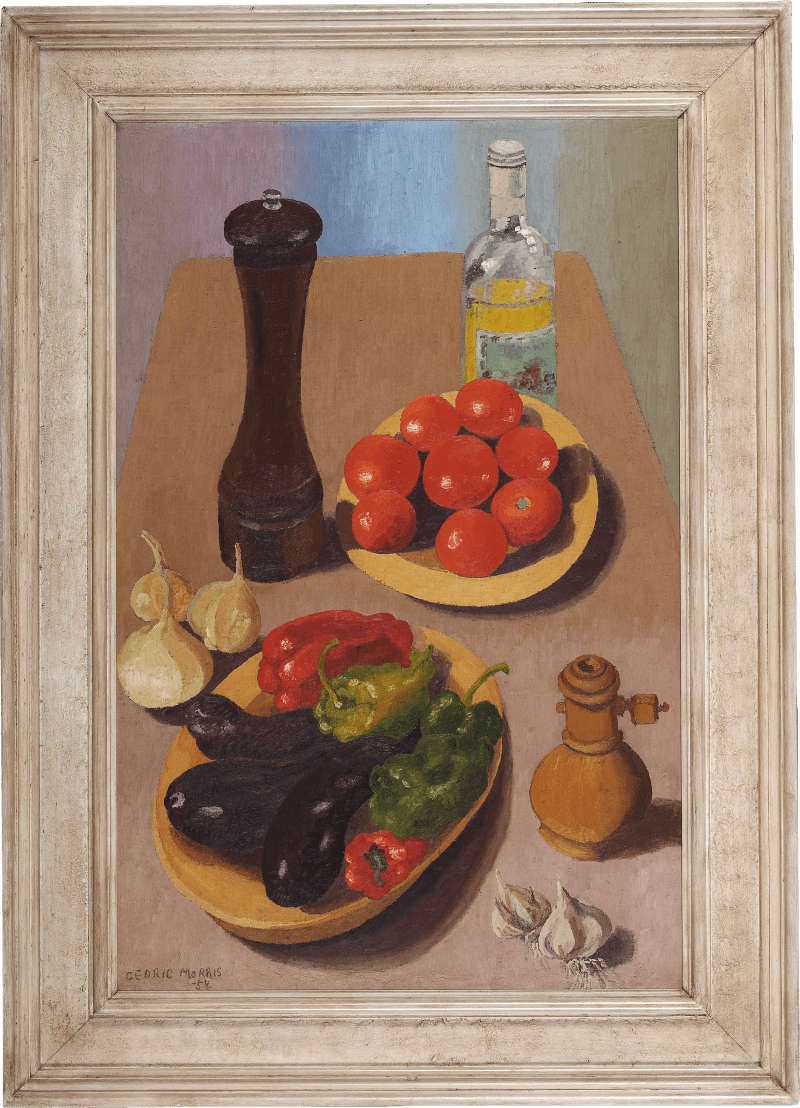Though Morris is largely known for his paintings of plants and landscapes, portraiture played a vital role in his own explorations as an artist and traveller.
Having moved to Paris at the beginning of 1921 and studied independently at the Académie Colarossi, Académie de la Grande Chaumière, and Académie Moderne, Morris noted that he was not looking for tuition but for inspiration.[1] He would stand outside in bars and cafes examining the characters that were present. It is here that Morris learned to study people, noted as a great observer and ‘watcher’ of people, having known to ‘meander about slowly, watching things move…a twinkle lurking in his eye’.[2] He would observe to the degree of getting lost within the person observed in order to capture their idiosyncrasies and the nature of a certain cultural milieu.[3] Though Morris played a large role in the creative scene in Paris, mixing in circles with the likes of Man Ray and Ernest Hemmingway,...
Though Morris is largely known for his paintings of plants and landscapes, portraiture played a vital role in his own explorations as an artist and traveller.
Having moved to Paris at the beginning of 1921 and studied independently at the Académie Colarossi, Académie de la Grande Chaumière, and Académie Moderne, Morris noted that he was not looking for tuition but for inspiration.[1] He would stand outside in bars and cafes examining the characters that were present. It is here that Morris learned to study people, noted as a great observer and ‘watcher’ of people, having known to ‘meander about slowly, watching things move…a twinkle lurking in his eye’.[2] He would observe to the degree of getting lost within the person observed in order to capture their idiosyncrasies and the nature of a certain cultural milieu.[3] Though Morris played a large role in the creative scene in Paris, mixing in circles with the likes of Man Ray and Ernest Hemmingway, he and his lifelong partner Arthur Lett-Haines did not like staying in the city for long periods. It is in these years that Morris ventured further and fulfilled his love of travel.
In the summer of 1921 Morris travelled to Tizi Ouzou, Algeria, where he ‘settled for a short time…painting all the time prolifically’.[4] Utilising his skills at observing people in certain cultural settings, Morris made numerous studies of local inhabitants. This portrait of a woman clearly presents his direct representation of a local inhabitant in a style that would become so defining of Morris’ body of work.
The portrait is painted close-up and flattened out; giving an appearance of a simplified yet almost distorted depiction of a person. These modes of representation can be seen as responding to the contemporaneous styles of Cubism and Neue Sachlichkeit (‘New Objectivity’) whereby the viewer can see both sides of the sitter's face.[5] Although Morris’ inspiration from these movements is unknown, or at least undocumented, he is noted to have said ‘a realistic picture, while useful if you want to identify the subject, does not necessarily give you the most vivid impression of its character’.[6] This sense that essential character is to be gained from painting, rather than a direct likeness, stayed with him until he died in 1982. Indeed, Morris claimed ‘there must always be great understanding between painter and the thing painted, otherwise there can be no conviction and no truth…This might be called ‘vision’ and reality, as opposed to realism. Reality is knowledge and realism is only the appearance of knowledge…’.[7] This requirement for truth presents itself in a unique form of directness and simplicity that expels the sitter’s character to the viewer with a remarkable sense of immediacy.
Although the colours used and the dress of the subject infuses her with personality, it is the uncomplicated rendition of her features that provides the viewer with a visually playful interpretation of reality. The resultant work can be seen as the culmination of his love of travel and a unique insight into the workings of this artist.
[1] Lett-Haines, A. (c. 1968) Manuscript about Cedric Morris. [Manuscript.] [TGA 8317/2/8/5]. London: Tate Archives.
[2] Tyner, C. (1983) Letter to Richard Morphet, 19 August 1983 (Chloe Tyner was the daughter of Madame Elspeth Champcommunal with whom Cedric stayed in Vaucluse at Giverny).
[3] Blond Fine Art Ltd. (1979) Sir Cedric Morris: A Ninetieth Year Tribute. London: Blond Fine Art.
[4] Lett-Haines, A. (c. 1968) Manuscript about Cedric Morris. [Manuscript.] [TGA 8317/2/8/5.[ London: Tate Archives.
[5] Morphet, R. (1984) Cedric Morris. London: The Tate Gallery, p.87.
[6] Cedric, M., (1936) quoted in ‘Animals in Art 2. Cedric Morris’, Zoo, July 1936.
[7] Earp, T. W. (1928) ‘Cedric Morris’, The Studio. Vol. 96, No. 427, pp. 220-2.













